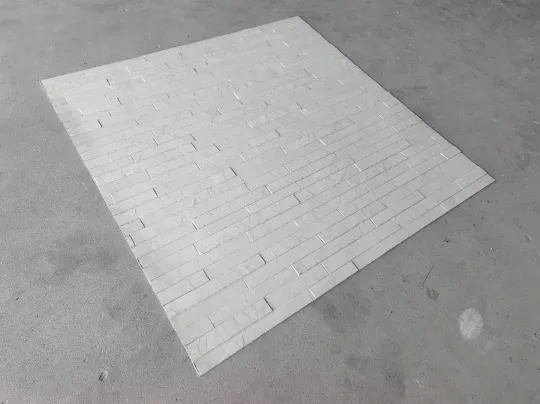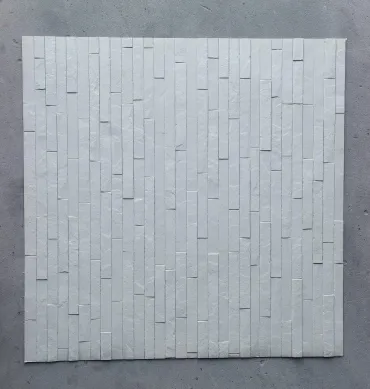
Top 15 Chinese Masonry Stone Manufacturers 2025

Masonry stone isn't just a building material—it's the heart and soul of spaces that endure. When you touch weathered granite or run your fingers along marble veining, you're connecting with a legacy that's been crafted over millennia. China's stone industry understands this deeply human connection to earthy materials. Their manufacturers have evolved beyond basic production into artists who coax personality from stone.
The real magic happens when pragmatic engineering collides with inspired design. The factories we'll explore aren't just cutting stone—they're curating the character of future landmarks. From bluestone pathways that'll feel like home to monumental facades destined to become city signatures, these artisans mix age-old techniques with tomorrow's innovations.
So let's journey beyond spec sheets and catalog listings. We'll explore the workshops where stone gets its voice and meet the teams who transform geological formations into emotional spaces. Whether you're reviving a historic courtyard or dreaming up a modern monument, you'll find extraordinary collaborators here.
Meet China's Stone Masters
Walk through their Fujian quarry and you'll understand why architects trust them with landmark projects. The foreman will show you how they "listen to the stone" before cutting—adapting angles to natural fault lines rather than fighting them. That's why their custom orders have such personality.
Their showroom feels like a geological museum curated by designers. You'll find sales reps sketching installation tips on napkins while explaining how different stones "age" over decades. That limestone patio? They'll project how weathering will add character by year five.
Meet Lin, their veteran inspector who spots imperfections most miss. He's been rejecting slabs with microscopic cracks since 2009. "Stones deserve respect," he says while showing rejected pieces repurposed as decorative bookends. Waste? Not in their vocabulary.
Watch engineers tweak composite formulas like chefs perfecting recipes. That fleck of gold in their quartz? Inspired by Himalayan river sediments. Designers love their mood boards showing how each finish shifts under dawn versus dusk light.
Their laboratory resembles a fusion kitchen. Chefs... sorry, technicians... demonstrate how ultra-thin slabs can curve around columns. "Why should walls feel rigid?" asks lead developer Chen while folding a sample like paper. They're reinventing material boundaries.
Their training videos show the proper way to "introduce" stone to a space. No harsh transitions—just harmonious blending with existing materials. Client galleries reveal how JSC granite ages beautifully alongside weathered oak or polished steel.
The "Moroccan Twilight" travertine carries faint iron veins mirroring desert sunset hues. Their showroom tags explain geological origins alongside human connections—a craftsman's notes about cutting challenges. It transforms purchasing slabs into collecting natural artifacts.
Their interface lets architects "play" with stone combos. Upload a building photo and instantly preview material swaps. Collaboration features connect you directly with quarriers mid-project—ask for bluer undertones and receive video responses within hours.
Their heated basalt flooring system turns stone into a hearth-like experience. Installation crews share tricks for nestling irregular stones like puzzle pieces. Garden designers swear by their "dancing pavers"—slightly uneven sets encouraging wandering footpaths.
Workshop videos teach techniques using simple tools—making grandpa's rock wall achievable. The "Stone Stories" blog chronicles families building patios over weekends. Packaging includes tiny geological sample kits showing regional stone personalities.
You'd swear their "Desert Mirage" collection captures actual heat waves. Texture engineers study sand dune patterns under microscopes. Touch-screen displays in showrooms let clients feel surface variations before ordering.
Installation crews demonstrate hanging stone sheets like wallpaper—saving weeks of labor. Their reclaimed wood composites tell ecological stories, blending salvaged timber with crushed quarry remnants. Recycling becomes romance.
Site managers work with poets to name stone formations during installations. That garden wall? Documented in their "Stone Birth Register" with coordinates from source quarries. Clients receive small carved samples showing material "fingerprints."
Their column wraps transform load-bearing pillars into sculptural elements. Design consultations include 3D modeling of how shadows interplay with fluted surfaces over seasons. It's architecture meets choreography.
Workshops teach restoration using specialized grinding blocks—erasing damage while honoring patina. Their "Rescue Kits" revive weathered monuments using period-appropriate techniques. Conservators worldwide keep these tools in their go bags.

Reading Stone's Future
China's stone industry pulses with quiet revolutions. It's not just about moving rock—it's about shifting perspectives. Three tectonic shifts are reshaping this landscape:
Material Memoirs
The most sought-after manufacturers now document a stone's "life story." Traceable sourcing maps show journeys from mountain veins through artisan hands. Some quarries include QR codes on slabs linking to videos of extraction crews sharing community impacts. This transforms sterile materials into participants with backstories.
Patina Cultivation
Smart factories now simulate decades of weathering in controlled chambers. That "century-old" look? Achieved sustainably without ecological damage. Installation crews train homeowners in enhancing natural aging—coffee staining for warmth or vinegar washes for mossy accents. Stone becomes a living collaborator.
Digital Archaeology
Advanced scanning creates 3D models of ancient masonry patterns for precise reproduction. Historical sites get digitally preserved while new constructions incorporate traditional craftsmanship through AI-assisted carving. The past informs the present without pillaging heritage sites.
What does this mean for your next project? Stone selections become dialogues between history and innovation. The most forward-thinking manufacturers blend ecological responsibility with artistic expression—proving that the most enduring materials can also be the most nurturing.
Natural Questions
Think about the relationship you want with your materials. Natural stone ages with you—scratches become character marks, weathering tells climatic stories. Composites offer consistency and design flexibility but age differently. Visit manufacturers to compare how their materials evolve over years through sample galleries.
Consider stone as multi-generational investments. Quality limestone patios often outlive the houses they surround. Factor replacement cycles—many composites last 15-25 years before showing age, while properly maintained granite withstands centuries. Ask manufacturers for lifecycle analyses of their products.
Leading manufacturers prove it daily. Solar-powered quarries and closed-water systems are becoming standard. Community benefit programs offset ecological footprints. Transparency reports now accompany premium materials—look for traceability certifications. Remember that "high-quality building materials" means ethical quality too.
The stone selection journey reveals much about your project's values. Each crease in marble, fleck in granite, or variegation in slate connects us to terrestrial memories while letting us craft new stories. That's the timeless attraction of masonry stone—earth's most articulate building blocks.
China's stone artisans honor ancient traditions while embracing contemporary innovation. Whether creating monumental facades or intimate garden paths, they're proving stone remains humanity's most conversationally rich building material—speaking through geology while enabling architectural poetry.
Tags:
Recommend Products











